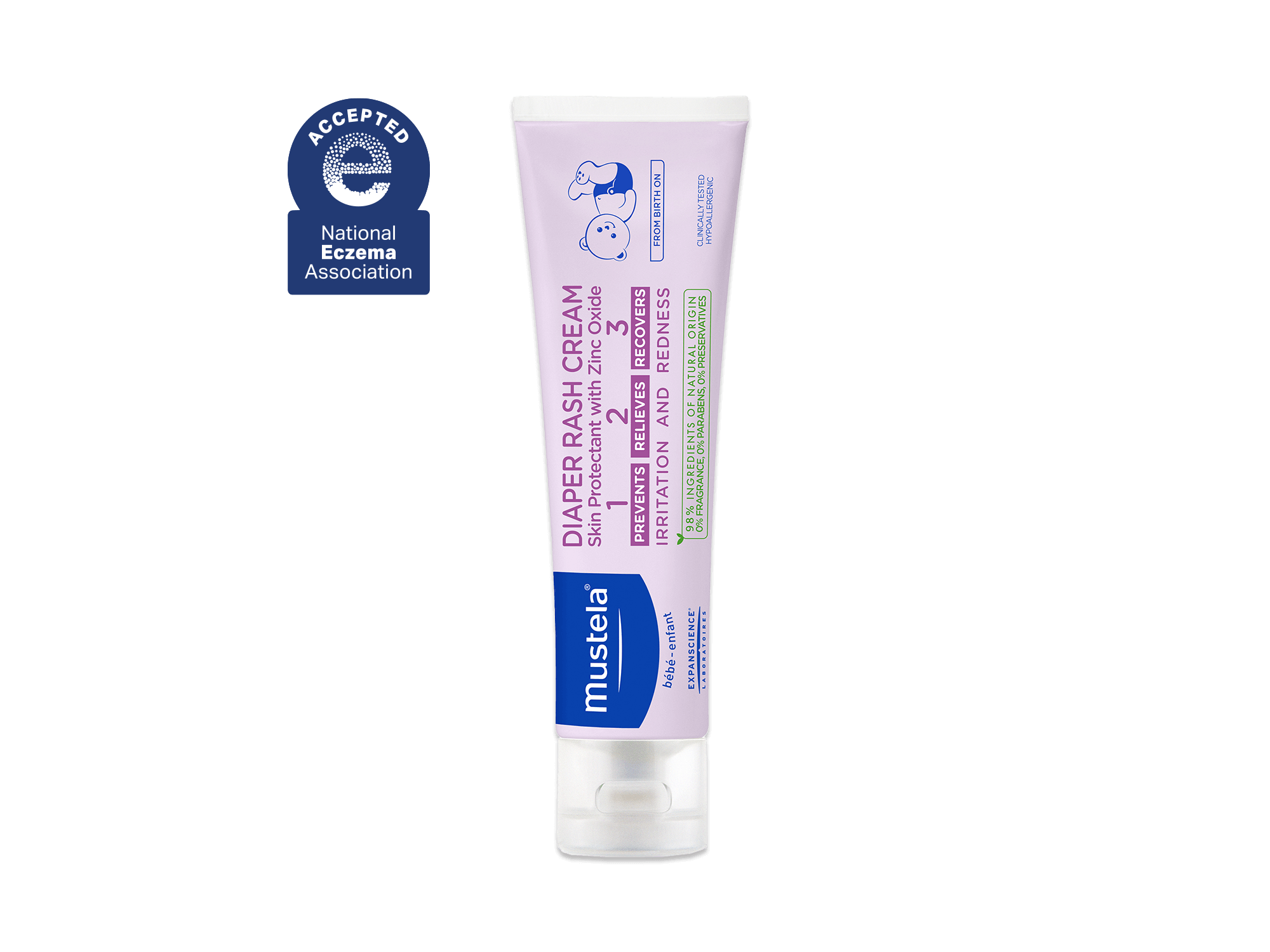Your baby’s digestive system has matured over the past six months, and it may be time to introduce solid foods. But knowing what and how much to feed your baby at each meal can be confusing. To help you feed your little one well, here’s a 6 month old feeding schedule to try.
In addition to the schedule, we’ll cover the basics of starting solids and share a few tips to help your baby get used to eating food. We’ll also talk about monitoring their intake and output so you can ensure they’re eating enough.
However, these are just general guidelines. Ask your pediatrician if you have specific questions about your child’s nutritional needs.
Table Of Contents
- Why Do You Need A Feeding Schedule?
- What Does A 6 Month Old Feeding Schedule Look Like?
- A Quick Guide To Introducing Solid Foods
- 6 Month Old Feeding Schedule: Intake And Output
Why Do You Need A Feeding Schedule?

Many babies thrive with routines and schedules. Knowing what to expect makes them feel more secure and relaxed.
A feeding schedule also helps you. Instead of trying to remember exactly when your baby last ate or if you fed them enough today, you can simply refer to your schedule.
Your brain will thank you for this, especially if you still feel exhausted.
What Does A 6 Month Old Feeding Schedule Look Like?
The Centers for Disease Control and Prevention recommends giving your child something to eat or drink every few hours throughout the day. In total, they’ll need five to six feedings.
Note: At this age, they won’t eat solids at every meal. Right now, the goal is to get your baby used to eating food, so you’ll start with just one serving per day.
Here’s a sample feeding schedule for a six month old:
- 6:00 a.m.: Wakeup and eat 6-8 ounces of breastmilk or formula, followed by a few teaspoons of solid food
- 9:30 a.m.: 6-8 ounces of breast milk or formula
- 12:00 p.m.: 6-8 ounces of breast milk or formula
- 2:30 p.m.: 6-8 ounces of breast milk or formula
- 5:15 p.m.: 6-8 ounces of breast milk or formula
- 7:00 p.m.: 6-8 ounces of breast milk or formula
You’ll want to tweak this to work for you. For example, if your mornings are rushed, try moving solid foods to dinner instead of breakfast. This gives your baby more time to explore new tastes and textures.
Also, remember that some babies don’t sleep through the night at this age. If your six month old is still waking for nighttime feeds, they may eat less during the day.
Pro Tip: As your baby gets better at eating, consider adding a second serving of solids into the schedule. Pick a time that works for you, and go for it.
A Quick Guide To Introducing Solid Foods
By now, you’re likely a pro at breastfeeding or bottle-feeding your baby. So when your pediatrician first gives you the OK to try solids, it can seem like you’re starting over again.
Here are some tips to help you through the transition.
Keep Safety In Mind
Choking is a risk whenever your child eats, so help minimize the risk by providing a safe eating environment with constant supervision.
Have them sit in their high chair or another secure location. They shouldn’t be able to crawl or roll around with food in their mouth.
You’ll also want to cut their food into appropriate-sized pieces. Your baby needs tiny pieces of soft foods or purees at this age.
Wash Their Hands
Proper hygiene can help keep your baby healthy, so wash their hands before they touch food. No Rinse Cleansing Water makes this simple since you can sit them in their high chair and wash them without water.
To use this product, you pump a bit onto a washcloth and gently pat your baby’s hands for a few seconds. The micellar water removes dirt or grime, and you don’t have to rinse it off. It’s very convenient.
Introduce One Food At A Time
Choose one food to introduce your child first. There’s no right or wrong type of food to give them.
You could start with:
- Baby cereal mixed with breast milk or formula
- Avocado
- Applesauce
- Banana
- Peas
- Carrots
- Rice
- Peaches
- Chicken
- Beef
Or a variety of other foods. However, once you pick a food, stick with that one for three to five days. Then, select another one to try. By giving your baby only one new food at a time, you’ll be better able to identify ones that cause allergic reactions.
Once your little one has successfully eaten a few foods, you can combine them to create more exciting meals, like cereal and fruit or meat and veggies. That’s when mealtime gets really fun!
Plan On A Mess
There’s a simple equation when it comes to teaching your child how to eat: Baby + Solids = A Mess
Of course, your baby isn’t making a mess on purpose. They’re just learning about the world around them and figuring out how to get that delicious-smelling stuff into their mouth. It’s hard work sometimes.
To make clean up easier, prepare in advance for a mess. Put a bib on your little one before they start eating to protect their clothes.
In addition, keep some Mustela Cleansing Wipes nearby. This way, you can quickly remove the bib and give your baby a wipe-down before taking them out of the high chair. Then, you can put them somewhere safe while you finish cleaning.
As you do, remember that the mess is worth it. Before long, your little one will be a pro at getting the food into their mouth without wearing it.
Until then, try to enjoy the process and take some pictures for posterity. A shot of your little one with spaghetti on their head will be a great addition to their graduation slideshow.
Start Small
Your six-month-old doesn’t need half a cup of applesauce or an entire pureed chicken breast. Their stomach is tiny, and filling it up won’t take much. A tablespoon or two will do.
Feeding your baby too much may make them uncomfortable and fussy. To avoid this, start small and gradually increase the amount they eat as their appetite grows.
Follow Your Baby’s Lead
Traditionally, parents started feeding their babies purees with a spoon. But new research has shown this isn’t the only way to introduce solid foods.
Baby-led weaning is another option that gives your baby more autonomy over the food they eat. This is when you offer your baby soft finger foods from the start and let them feed themselves as they explore different foods' taste, texture, and smell.
But regardless of which feeding method you follow, you should listen to your little one and follow their lead. When they show hunger cues, feed them – even if it’s not yet the scheduled time.
If they seem full or agitated, stop. Don’t force them to eat if they’re not hungry or insist that they clear their plate.
These steps can help your child develop a healthy relationship with food that can last a lifetime.
Don’t Stop The Milk
As you introduce solids, don’t cut out a bottle or breastfeeding session. Your baby still needs those nutrients to grow and thrive.
Until their first birthday, formula or breastmilk should be your baby’s primary food source. Other food is just for fun right now.
6 Month Old Feeding Schedule: Intake And Output
A feeding schedule helps you monitor how much food your baby eats daily. But it’s also essential to keep track of their output. You do that by counting diapers. They should have five to six wet diapers throughout the day.
In addition, they should be pooping regularly. Some babies do this several times a day, while others go only a few times a week. They're probably not constipated if their stools are soft and not causing pain.
If you have any questions or concerns about your baby’s output, bring it up with their doctor. They can review your feeding schedule and check your little one’s weight to ensure they’re getting enough.
Take It One Bite At A Time!

Introducing solids to your baby doesn’t have to be a challenge. With the right 6 month old feeding schedule and some patience, you’ll help your child through this transition, one bite at a time.
Just be sure to stock up on some Cleansing Wipes and No Rinse Cleansing Water. You’re going to need them!






















